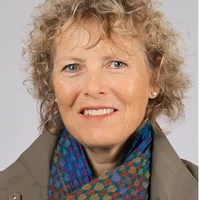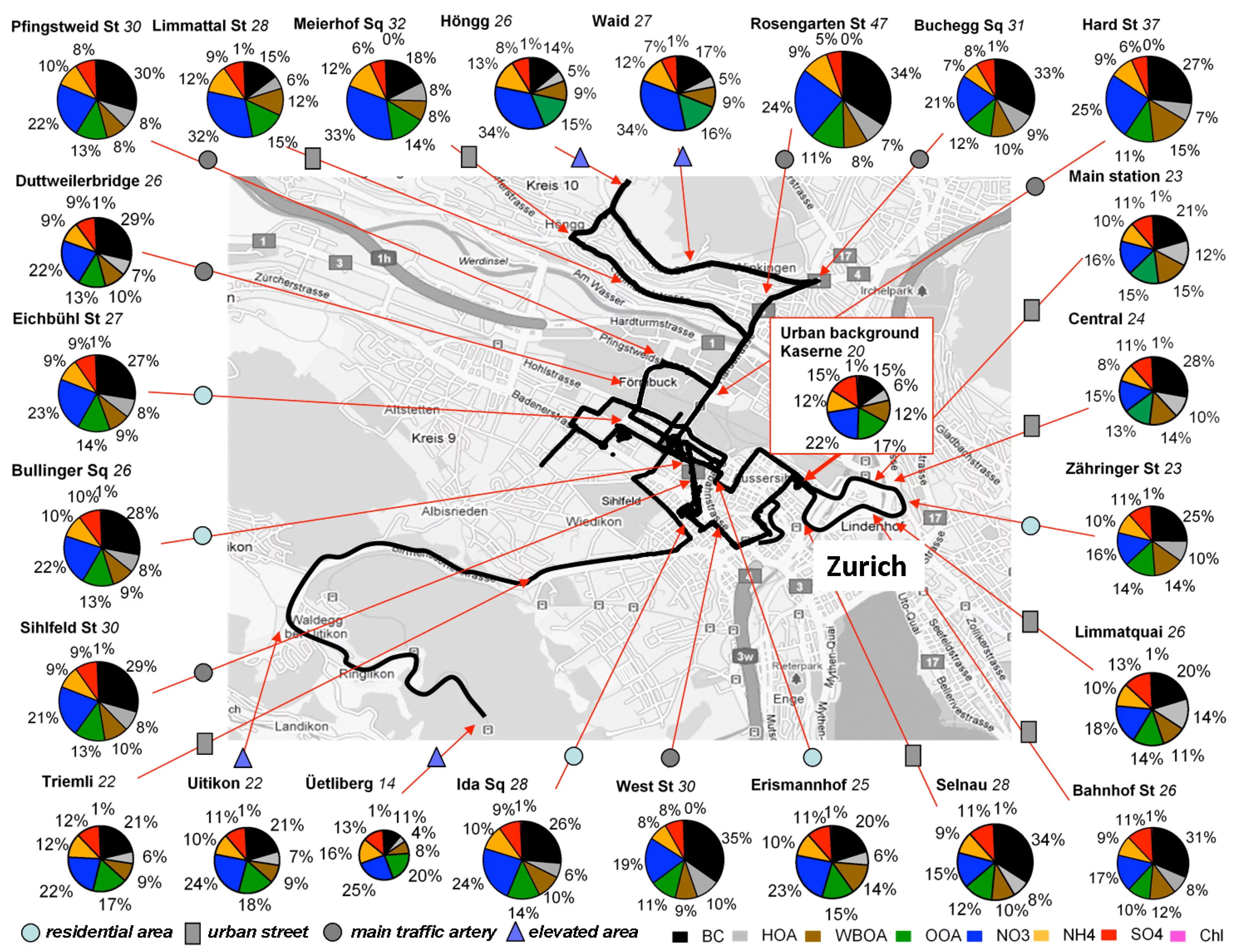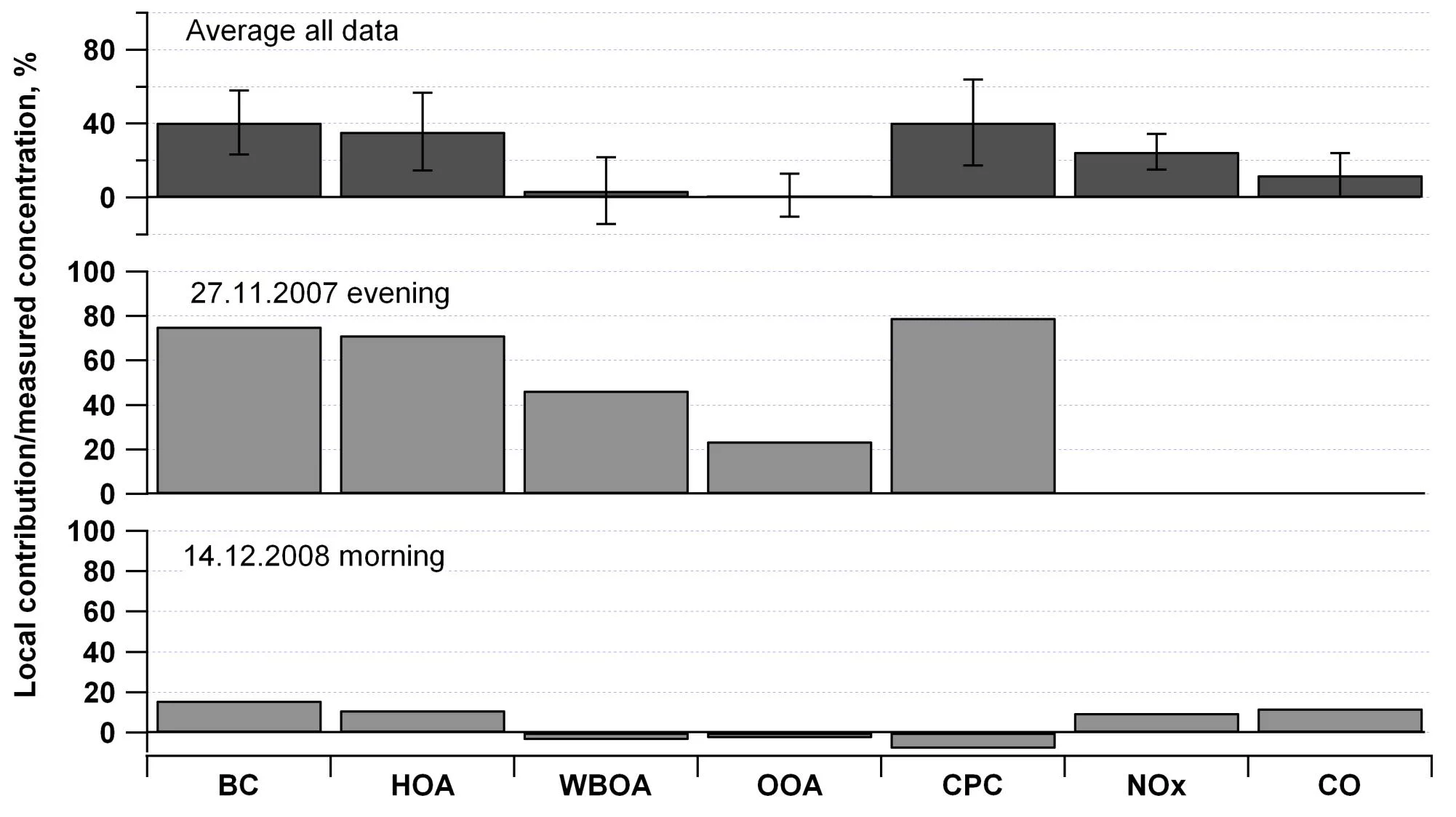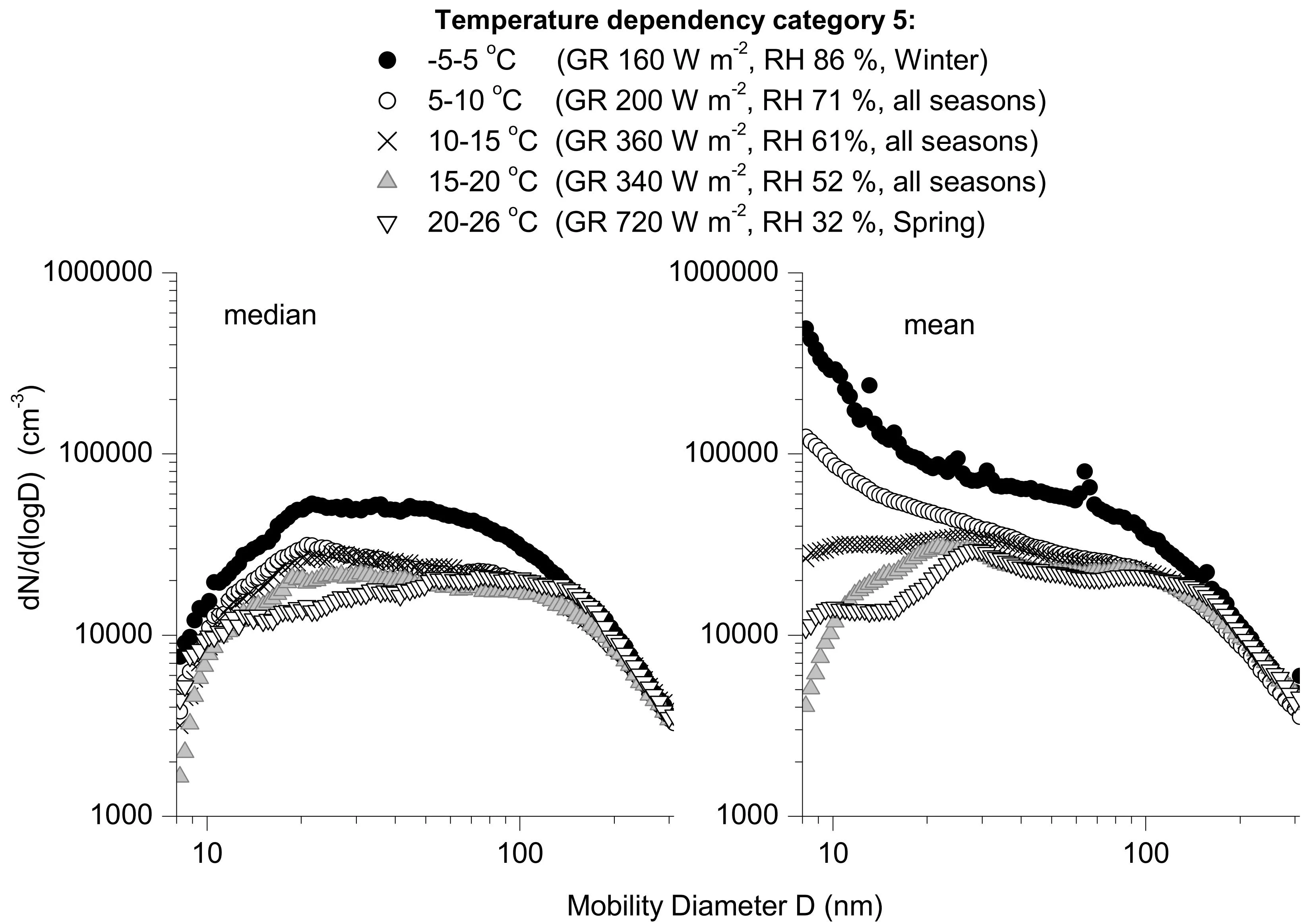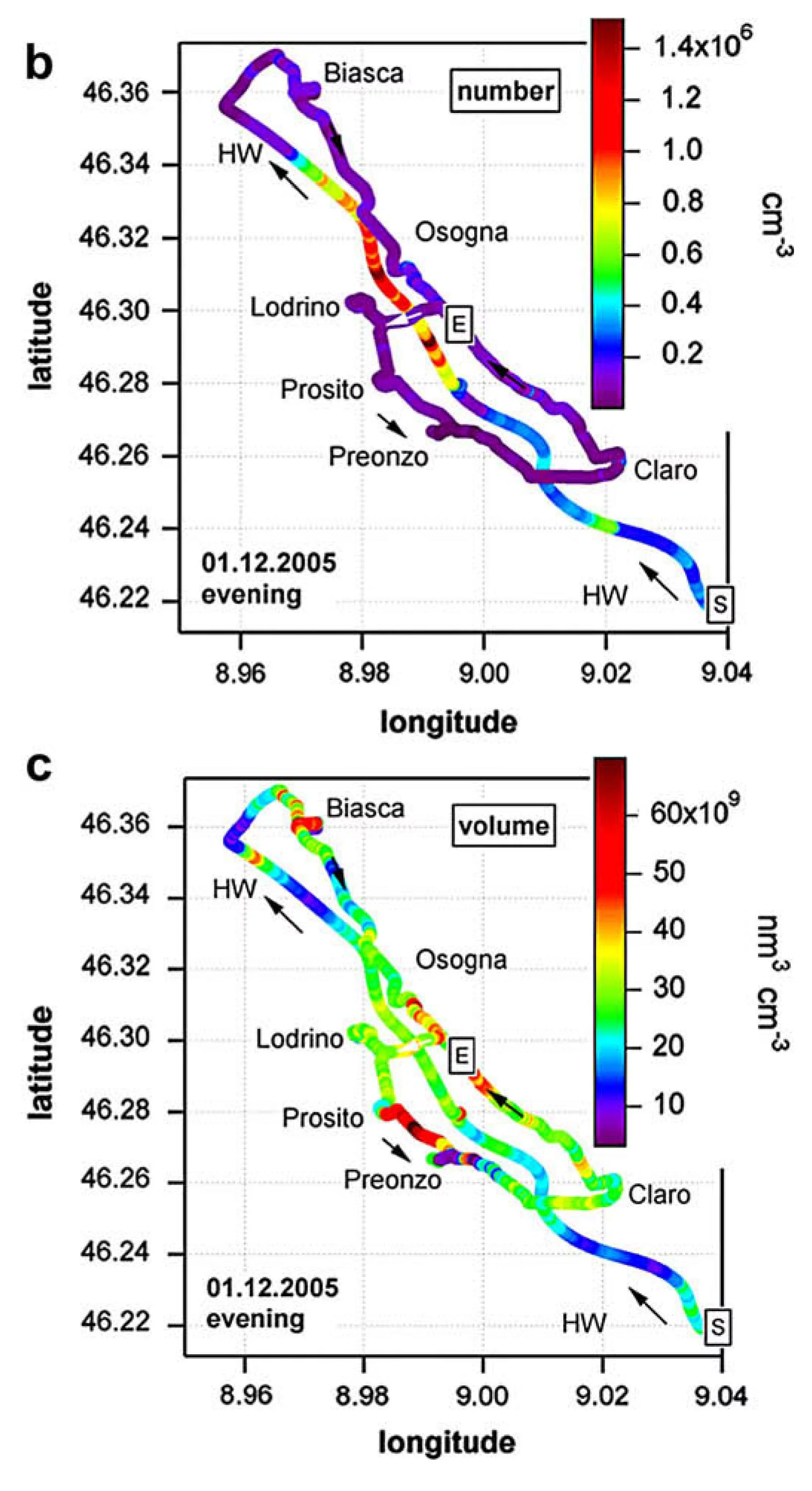Scope of project
Mobile measurements are used to derive the spatial distributions in Switzerland. Until 2008, the focus was on the size distribution of particles using SMPS or FMPS measurements. Since then, we focus on the chemical composition and sources of organic aerosol using aerosol mass spectrometer, aethalometer, MAAP.
Field campaigns
- Canton Zurich, Feb 2001 - May 2002
- Ticino, Dec 2005 and June 2007
- Rhine Valley, Feb 2007 and Feb 2008
- City of Zurich, Nov 2007 - Feb 2008 and Dec 2008
Key findings
- Setup of mobile laboratory (one of the first in Europe) (Bukowiecki et al., 2002)
- Huge differences in particle number in urban/rural day/night conditions with the highest in urban areas during the day (Bukowiecki et al., 2002)
- Background number concentrations for different exposition in Canton Zurich were assessed to be 15'000 cm-3 in elevated rural areas, 35'000 cm-3 in urban and >80'000 cm-3 in freeway-influenced areas (Bukowiecki et al., 2003)
- At low temperature, a strong enhancement of primary ultrafine particles are found (Bukowiecki et al., 2002)
- In Ticino, the concentrations of nanoparticles (<30nm) were found to be strongly increased on the
- In contrast in Ticino, the highest volume concentrations were found in the villages indicating the importance of wood burning for particulate mass (Weimer et al., 2009)
- In the city of Zurich, the composition of PM1 is dominated by secondary components (Mohr et al., 2011)
- The local contribution to pollution in the city of Zurich amount on average 40% for particle number concentration, hydrocarbon-like organic aerosol and black carbon while for wood burning, OOA and secondary inorganic components the contribution is less than 10% (Mohr et al., 2011)
Publications
Journal Articles
A mobile pollutant laboratory - measuring gas phase and aerosol ambient concentrations with high spatial and temporal resolution.
Bukowiecki, N., J. Dommen, A. S. H. Prévôt, R. Richter, E. Weingartner, and U. Baltensperger, 2002
Atmospheric Environment, 36, 5569-5579.
Fine and ultrafine particles in the Zürich (Switzerland) area measured with a mobile laboratory. An assessment of the seasonal and regional variation throughout a year.
Bukowiecki, N., J. Dommen, A. S. H. Prevot, E. Weingartner, and U. Baltensperger, 2003
Atmos. Chem. Phys., 3, 1477-1494.
Spatial variation of chemical composition and sources of submicron aerosol in Zurich during wintertime using mobile aerosol mass spectrometer data.
Mohr, C., R. Richter, P. F. DeCarlo, A. S. H. Prevot, and U. Baltensperger, 2011
Atmospheric Chemistry and Physics, 11, 7465-7482.
DOI: 10.5194/acp-11-7465-2011
Mobile measurements of aerosol number and volume size distributions in an Alpine valley: Influence of traffic versus wood burning.
Weimer, S., C. Mohr, R. Richter, J. Keller, M. Mohr, A. S. H. Prevot, and U. Baltensperger, 2009
Atmospheric Environment, 43, 624-630.
Bukowiecki, N., J. Dommen, A. S. H. Prévôt, R. Richter, E. Weingartner, and U. Baltensperger, 2002
Atmospheric Environment, 36, 5569-5579.
Fine and ultrafine particles in the Zürich (Switzerland) area measured with a mobile laboratory. An assessment of the seasonal and regional variation throughout a year.
Bukowiecki, N., J. Dommen, A. S. H. Prevot, E. Weingartner, and U. Baltensperger, 2003
Atmos. Chem. Phys., 3, 1477-1494.
Spatial variation of chemical composition and sources of submicron aerosol in Zurich during wintertime using mobile aerosol mass spectrometer data.
Mohr, C., R. Richter, P. F. DeCarlo, A. S. H. Prevot, and U. Baltensperger, 2011
Atmospheric Chemistry and Physics, 11, 7465-7482.
DOI: 10.5194/acp-11-7465-2011
Mobile measurements of aerosol number and volume size distributions in an Alpine valley: Influence of traffic versus wood burning.
Weimer, S., C. Mohr, R. Richter, J. Keller, M. Mohr, A. S. H. Prevot, and U. Baltensperger, 2009
Atmospheric Environment, 43, 624-630.
Funding
Swiss Federal Office for the Environment (FOEN), Liechtenstein, Land Vorarlberg, Ostluft, Cantons Zurich, Graubünden, Ticino, St. Gallen, City of Zurich

